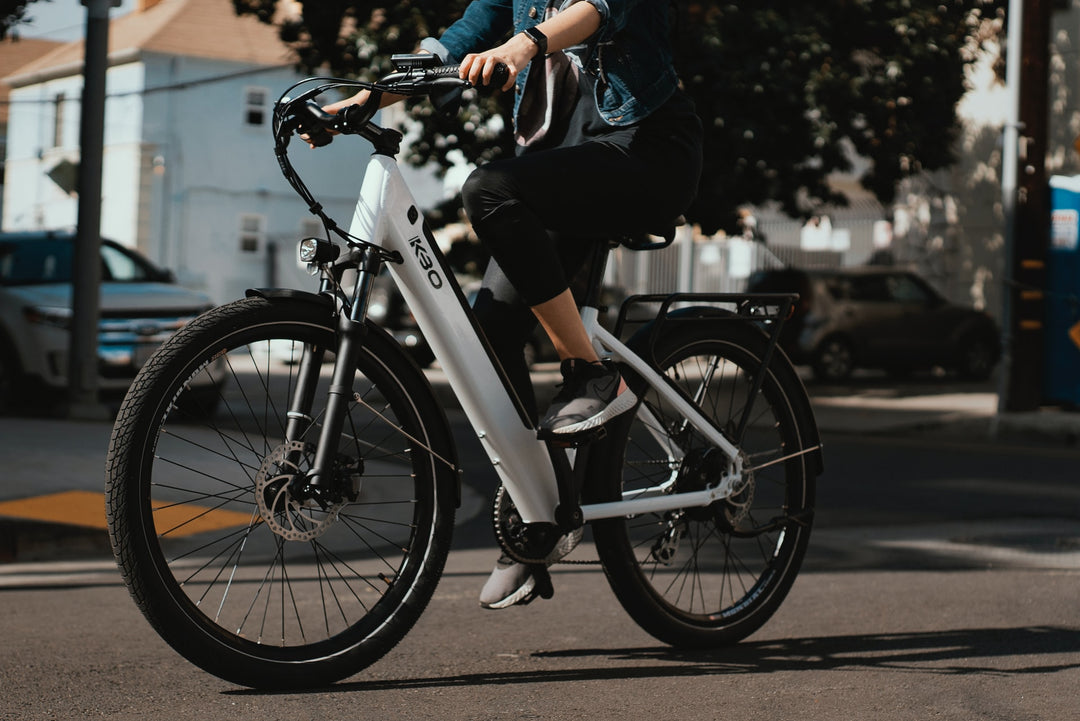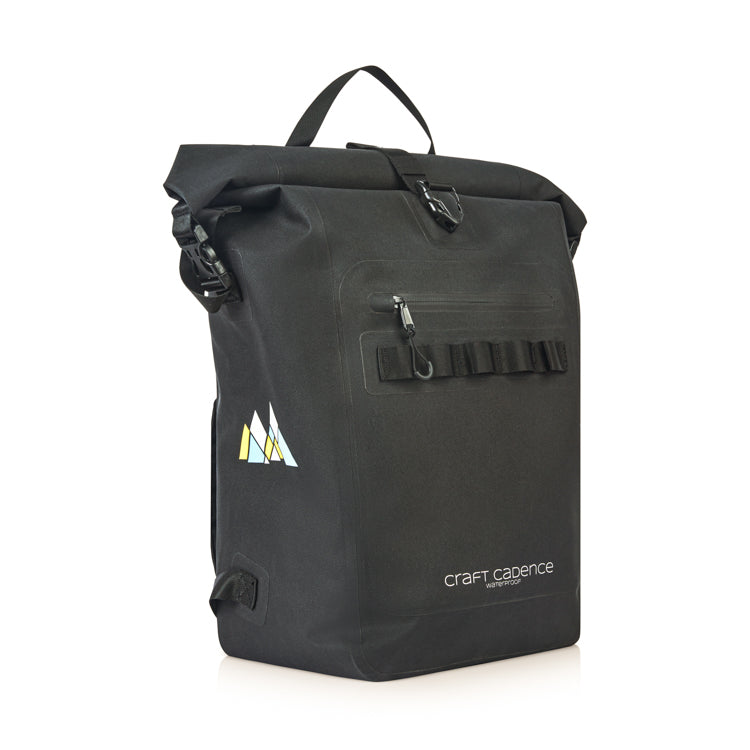Creating an eco-friendly waterproof cycling backpack series - why rPET - EP002
A lot of you may be wondering, why is Craft Cadence emabarking on this project to make a waterproof cycling backpack from recycled materials, when there are so many other competing priorities that we could instead be focusing on?
The number one reason is simply that it is our choice to strive to be the most sustainable company we can.
Cycling is often lauded as a sustainable form of transportation as it does not consume fossil fuels and helps to take cars off the road, especially commuters such as ourselves.
However, it is questionable whether the cycling industry itself produces products that are themselves sustainable. As this Guardian piece point out, cycling accessories and products are often made from petroleum based plastic resins (e.g. EPS, Polyester, EVA) that take hundreds of years to biodegrade. Consumers for the most part are price conscious and are more interested in the effectiveness of the product (speed, weight, aerodynamic features, etc).
At Craft Cadence, we are no different and are just as guilty as everyone else. Our flagship product is made from PVC, which while possible is not straightforward to recycle at end of life. The most likely optimal outcome is probably incineration with energy recovery. The worst outcome is that they are landfilled which depends on the waste management practices of the local authority where the product is disposed. However because PVC is stronger and more tear resistant than polyester and nylon equivalents, it will generally last longer, even decades if cared for properly. So over the lifetime of the product it is arguably more sustainable than cheaper alternatives that are ultimately disposed within 6-24 months.
We do however want to use more sustainable materials for our products that strike the best balance between function and what is best for the planet. This has led us down the path of rPET.
We have turned our attention to rPET (recycled PET) because it is simply the most commercially proven recycled form of plastics for apparel and accessories manufacturing available today. rPET works by recycling waste PET bottles, crushing them into small pallet resins, melting and spinning them into yarn to be reused in many applications such as clothes and in our case, a backpack.
Our friends at Earthhero has down a wonderful infographic that explains this process much better than I can:

We also know, what a colossal problem plastic waste is to the planet. Some quick fasts (credit to sites such Ecowatch and WWF):
Alongside climate change, it is arguable that combating plastic waste is the greatest environmental challenge facing mankind today.
A number of academic and real world studies have been conducted, which all point to the fact that use of rPET instead of virgin PET leads to a lower energy use, carbon footprint and other environmental impacts such as acidification and eutrophication.
In the paper "Open-loop recycling: A LCA case study of PET bottle-to-fibre recycling" in the journal Resources, Conservation and Recycling (Volume 55, Issue 1, November 2010, Pages 34-52), Dr Li Shen and team from Utrecht University concluded that the use of rPET results in reduction of carbon emissions of at least 25% and up to 75% in optimal scenarios. rPET also produces lower environmental impacts than virgin PET in 8 out of 9 categories of pollution.
HP, the IT hardware company as also conducted a life cycle assessment of its switch from virgin PET to rPET for its ink cartridges and concluded that it achieved a 33% reduction in the carbon footprint of its cartridges, alongside numerous other environmental benefits such as resource use and energy consumed.
The most visible and tangible environment benefit is simply that it removes PET bottles from potential landfill and away from our rivers and oceans where it has such an adverse impact on marine life. We would expect each backpack to remove around 30 PET bottles from our environment, into a use case that can last for decades which is a win-win situation.
Having set our direction, our dream of creating a more sustainable waterproof cycling commuter backpack is currently at the concept stage and we are eager to press ahead. We do not know what challenges lie ahead but we will certainly give it our best shot to make it a reality. There is still much to learn about the industry, the performance and technical trade-offs of producing a backpack from this relatively new material.
We are glad to share this journey with our customers. If you have any comments, suggestions and/or questions, we would be more than happy to hear feedback from this process
The number one reason is simply that it is our choice to strive to be the most sustainable company we can.
Cycling is often lauded as a sustainable form of transportation as it does not consume fossil fuels and helps to take cars off the road, especially commuters such as ourselves.
However, it is questionable whether the cycling industry itself produces products that are themselves sustainable. As this Guardian piece point out, cycling accessories and products are often made from petroleum based plastic resins (e.g. EPS, Polyester, EVA) that take hundreds of years to biodegrade. Consumers for the most part are price conscious and are more interested in the effectiveness of the product (speed, weight, aerodynamic features, etc).
At Craft Cadence, we are no different and are just as guilty as everyone else. Our flagship product is made from PVC, which while possible is not straightforward to recycle at end of life. The most likely optimal outcome is probably incineration with energy recovery. The worst outcome is that they are landfilled which depends on the waste management practices of the local authority where the product is disposed. However because PVC is stronger and more tear resistant than polyester and nylon equivalents, it will generally last longer, even decades if cared for properly. So over the lifetime of the product it is arguably more sustainable than cheaper alternatives that are ultimately disposed within 6-24 months.
We do however want to use more sustainable materials for our products that strike the best balance between function and what is best for the planet. This has led us down the path of rPET.
rPET and the plastics problem
We have turned our attention to rPET (recycled PET) because it is simply the most commercially proven recycled form of plastics for apparel and accessories manufacturing available today. rPET works by recycling waste PET bottles, crushing them into small pallet resins, melting and spinning them into yarn to be reused in many applications such as clothes and in our case, a backpack.
Our friends at Earthhero has down a wonderful infographic that explains this process much better than I can:

We also know, what a colossal problem plastic waste is to the planet. Some quick fasts (credit to sites such Ecowatch and WWF):
- 480 billion plastic drinking bottles were sold around the world in 2016, and growing
- Enough plastic is thrown away each year to encircle the earth 4 times
- The production of plastic uses around eight percent of the world's oil production
- It takes 500-1,000 years for plastic to degrade.
- The Great Pacific Garbage Patch is located in the North Pacific Gyre off the coast of California and is the largest ocean garbage site in the world. This floating mass of plastic is twice the size of Texas, with plastic pieces outnumbering sea life six to one
- The UK only recycled around a 33% of PET bottles, the US around 28%, and Germany at 97% with similar high percentages in Scandinavia and the Netherlands
Alongside climate change, it is arguable that combating plastic waste is the greatest environmental challenge facing mankind today.
Is rPET more sustainable than virgin plastics?
A number of academic and real world studies have been conducted, which all point to the fact that use of rPET instead of virgin PET leads to a lower energy use, carbon footprint and other environmental impacts such as acidification and eutrophication.
In the paper "Open-loop recycling: A LCA case study of PET bottle-to-fibre recycling" in the journal Resources, Conservation and Recycling (Volume 55, Issue 1, November 2010, Pages 34-52), Dr Li Shen and team from Utrecht University concluded that the use of rPET results in reduction of carbon emissions of at least 25% and up to 75% in optimal scenarios. rPET also produces lower environmental impacts than virgin PET in 8 out of 9 categories of pollution.
HP, the IT hardware company as also conducted a life cycle assessment of its switch from virgin PET to rPET for its ink cartridges and concluded that it achieved a 33% reduction in the carbon footprint of its cartridges, alongside numerous other environmental benefits such as resource use and energy consumed.
The most visible and tangible environment benefit is simply that it removes PET bottles from potential landfill and away from our rivers and oceans where it has such an adverse impact on marine life. We would expect each backpack to remove around 30 PET bottles from our environment, into a use case that can last for decades which is a win-win situation.
What next
Having set our direction, our dream of creating a more sustainable waterproof cycling commuter backpack is currently at the concept stage and we are eager to press ahead. We do not know what challenges lie ahead but we will certainly give it our best shot to make it a reality. There is still much to learn about the industry, the performance and technical trade-offs of producing a backpack from this relatively new material.
We are glad to share this journey with our customers. If you have any comments, suggestions and/or questions, we would be more than happy to hear feedback from this process



